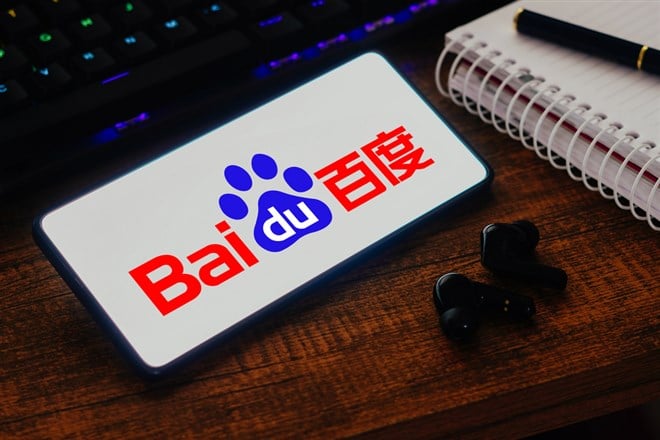Ticker Reports for August 15th
3 Long-Term Dividend Buys You Can Get for Under $50
Despite ongoing concerns about overvalued stocks, many value investors sleep well at night. That’s because the key to long-term value investing is total return, which includes a healthy, growing dividend.
It also means having the discipline to do what doesn’t come naturally to many investors. That is, stepping away from their screens and letting the market do its work. That’s because many of these stocks are mature companies that won’t fog the mirrors of many financial news outlets.
However, boring is beautiful when it counts. That’s what investors get by investing in these three high-yield dividend stocks that can still be purchased for less than $50 per share.
Pfizer’s Turnaround Is Taking Shape
Investors may be quick to note that Pfizer Inc. (NYSE: PFE) hasn’t been a great stock for value investors in the last five years, registering a negative 13% total return in that time. The decline in revenue and earnings from its vaccine-fueled peak in 2021 lent support to the claim that Pfizer was cheap for a reason.
However, like many pharmaceutical stocks, it’s always helpful to look at the stock’s performance over a longer time period. Over a 10, 15, or 20-year period, PFE stock has delivered a strong total return to value investors. The company’s August 5 earnings report lends support to the idea that the company may be ready for the next wave of growth-producing drugs.
Pfizer beat revenue and earnings expectations and raised its full-year earnings per share (EPS) expectations. The gains were due largely to the company’s COVID-19 portfolio. However, the company’s future growth is supported by a diversified portfolio and a strong pipeline of new drugs and vaccines, notably in the emerging area of personalized medicine.
That’s pushed PFE stock up 1.4% since the earnings report. However, the consensus price of $28.12 gives investors 13% upside to go along with a high-yield dividend that currently has a 6.99% yield.
Spending in 5G Is Paying Off For Value Investors
Verizon Communications Inc. (NYSE: VZ) is another stock that’s had choppy performance in the last five years, delivering a total return of just over 1%.
Much of that was due to the company’s investment in 5G, which put pressure on earnings.
That expense is starting to pay off as 5G adoption becomes widespread. This delivers two things that value investors love to hear: recurring revenue growth and improved margins.
Both metrics were on display in the company’s second-quarter earnings report.
VZ stock is up nearly 10% since the middle of July and is still trading in the middle of its 52-week range.
Analysts give Verizon stock approximately 10% more upside, which is in addition to the company’s safe dividend, which has increased for 20 consecutive years and has a 6.26% yield.
A Cash Flow Machine Independent of Oil Prices
Energy stocks have underperformed the market in the last five years, but Kinder Morgan Inc. (NYSE: KMI) has been a profitable exception. KMI stock has delivered a total return of approximately 152% in the last five years.
This is due to the company’s business model. The midstream oil company owns and operates a vast pipeline network spanning 83,000 miles throughout North America and Canada.
This includes both oil and natural gas, the latter of which is critical to meeting the power demands of data centers.
Kinder Morgan collects a fee to reserve capacity, ensuring a steady revenue stream that is independent of underlying oil and natural gas prices. It's that volume that contributes to the company’s earnings growth.
Many analysts believe that oil and natural gas prices will move higher as the economy grows in the second half of 2025 and into 2026.
That growth supports analysts’ estimates for a 17% upside in KMI stock, along with a dividend yielding 4.4%.
Missed out on Bitcoin gains?
Missed out on Bitcoin gains?
Baidu Teams With Uber and Lyft on Robotaxis—Stock Upside Ahead?
There is a new wave of disruption in the automotive sector, with the advancements of artificial intelligence and its economies of scale allowing many industries to tap into the wonders of technology. Competition will now get fiercer than ever before.
This is where investors who can get in early on these themes will enjoy an upward ride for the rest of the year.
With this in mind, when it comes to the specifics of the automotive space, the autonomous driving boom (or robotaxis) should be the main focus. While a couple of companies in the United States are already testing their success in this manner, one Asian giant is ready to start expanding outside of China and into Europe over the next couple of years.
That company is Baidu Inc. (NASDAQ: BIDU), which can be seen as China’s version of Alphabet Inc. (NASDAQ: GOOGL) because it controls a large part of the search engine market and is now expanding into robotaxis, much like Google’s Waymo.
However, this expansion means Baidu will partner with ridesharing platforms Uber Technologies Inc. (NYSE: UBER) and Lyft Inc. (NASDAQ: LYFT) to make this happen, creating an opportunity for investors today.
2 Ways to Play This Theme
Most investors are reluctant to invest their capital in overseas stocks, particularly in China, where trust has declined over the past couple of years due to geopolitical tensions between Asia’s powerhouse and the United States. However, the fact that these American companies are now willing to partner up with Baidu should be a good initial sign.
That presents the first angle investors can take in this new robotaxi theme: investing directly into Baidu stock. Baidu stock offers a steep discount in the technology space compared to its American counterparts, especially as it trades at 78% of its 52-week highs, giving investors enough of a gap to be filled on the upside.
Knowing that this discount is present in Baidu stock, some Wall Street analysts decided to give their own opinion about the stock and its future potential. While the consensus is set for a Hold rating valuing Baidu stock at $105.1 per share, Citigroup analyst Alicia Yap sees Baidu as a Buy with a $140 per share price tag.
Yap’s view implies that Baidu stock could rally 60% from its current price, effectively closing the gap to its 52-week high. However, this view does not at all factor in the robotaxi business expansion into European nations and how the market could seek to value this business in the future.
That is where the real upside may be found in this Chinese blue-chip name; however, for those still having a hard time believing in the China story, there are other ways to play this theme through Uber and Lyft.
For a Smooth Ride: Uber Delivers
Having a presence across Europe will help Uber in this transition. It will facilitate a smoother process for technology implementation and consumer adoption, given that consumers already trust the Uber brand but may not be familiar with Baidu’s robotaxis.
In this sense, investors can see Uber as the less volatile way to gain exposure to this theme.
The company has already landed a similar partnership within the United States with electric vehicle maker Lucid Group Inc. (NASDAQ: LCID) in its own rollout of autonomous robotaxis.
With this in mind, the real successful case study is found in Uber and its future expansion into the American and European robotaxi markets.
This could explain why those from the Vanguard Group decided to buy 1.6% more of the stock for their balance sheets, now holding $17.7 billion worth of Uber stock (or 9% of the entire company).
Lyft: High-Risk, High-Reward Play on Robotaxis and EU Expansion
Now, investors with a higher risk appetite can look to Lyft’s role in this entire situation. It has yet to land its first robotaxi collaboration in the United States, and its European presence has only just begun.
After acquiring German rideshare platform FreeNow, Lyft’s operational capability is still in the early stages in Europe.
However, that doesn’t mean the company can’t make a splash the way Uber is doing, after all, there must be a reason why Baidu (being such a giant) chose to go with both Uber and Lyft in the first place.
Suppose investors believe Lyft can deliver on the expansion across Europe and also land an American robotaxi partnership. In that case, this is where the real upside lies.
This is also why the entire market is willing to pay a 57.8x price-to-earnings (P/E) ratio for the stock today, a steep premium compared to the 34.4x average P/E for internet services stocks. Smart investors know that markets always have a good reason to overpay for some stocks, and Lyft is justifying it with this story today.
What's inside Elon's building in Memphis will shock you
What's inside Elon's building in Memphis will shock you
Green Dot's 30% Rally: Turnaround Takes Off on Explosive Earnings
A decisive move in the market often signals a fundamental shift in a company’s story. For Green Dot Corporation (NYSE: GDOT), that moment arrived on Aug. 12, 2025, when its stock surged over 30% to a new 52-week high of $14.15. After a multi-year period of investor skepticism and stock price decline, this was a clear signal of change.
The move was backed by immense trading volume, more than four times its daily average, indicating firm conviction from financial sector investors. This spike was a direct reaction to Green Dot’s second-quarter financial report that decisively beat Wall Street's forecasts. The powerful results suggest that Green Dot’s long-term turnaround plan is no longer just a strategy on paper but one that is now delivering significant, tangible results.
Green Dot’s Breakout Quarter
The catalyst for the company’s dramatic repricing was a set of financial results that exceeded Green Dot’s analyst community’s expectations across the board. For the quarter, the company reported non-GAAP earnings per share (EPS) of 40 cents, a figure that was more than double the analyst consensus estimate of just 17 cents. This bottom-line outperformance was fueled by solid top-line growth, with non-GAAP revenues climbing 24% year-over-year to $501.2 million. The sheer scale of the platform’s activity was also on display, with Gross Dollar Volume (the total value of all transactions processed) reaching an impressive $38.5 billion.
The source of this strength is the key to understanding the company's future. The growth was not evenly distributed but was instead concentrated in its Business to Business (B2B) services segment, which saw revenues soar by an impressive 38%. This division is the heart of Green Dot’s turnaround strategy, powered by its Banking as a Service (BaaS) platform. In simple terms, Green Dot uses its banking license and technology infrastructure, known as Arc, to enable other major companies to offer their own branded financial products.
Recent partnerships provide clear proof of this strategy's success:
- A new collaboration with Samsung (OTCMKTS: SSNLF) for its Tap to Transfer feature is already generating impressive engagement.
- A new partnership with Credit Sesame, a sizable consumer finance brand, was described as a competitive takeaway, showing Green Dot can win against rivals for major contracts.
Perhaps the most potent signal of strength was management’s forward-looking statements. The company raised its full-year 2025 guidance for key profitability metrics, including Adjusted EBITDA and non-GAAP EPS. For investors, this upward revision signals strong internal confidence that the momentum seen in the second quarter is sustainable.
How Proactive Strategy Is Fueling the Turnaround
While a single great quarter can excite the market, sustained investor confidence is built on a durable, long-term growth platform. Green Dot's management team appears focused on precisely that, taking clear steps to ensure the current success is repeatable and built on a solid foundation.
A key part of this is the aggressive expansion of its partner pipeline. While a significant portion of its BaaS revenue comes from a single large partner, the company is actively diversifying. In 2025, Green Dot expects to launch seven new partners, a dramatic acceleration from just one new partner in 2024 and one in 2023. An upcoming launch with the prominent brand Crypto.com adds a modern, high-growth element to its portfolio, demonstrating that Green Dot’s platform can attract a wide array of fintech innovators.
At the same time, the company is solidifying its most critical legacy relationships. The second quarter’s GAAP Net Loss of $47 million was driven primarily by a one-time, non-cash equity charge of $70 million related to its partnership with Walmart (NYSE: WMT). Rather than a recurring loss, this should be viewed as a strategic investment to secure a cornerstone retail relationship for the next seven years, ensuring a stable revenue base from which to grow.
Finally, management is not just focused on revenue growth; it is also optimizing for profitability. The company has articulated a clear plan to improve its net interest income by deploying its significant cash holdings into higher-yielding assets expected to return between 5% and 7%. In a higher interest rate environment, this is a particularly timely and intelligent strategy for creating an additional, efficient stream of shareholder value.
Green Dot’s Compelling Case for a Second Look
Green Dot’s financial results have been met with validating endorsements from Wall Street. Following the earnings release, Northland Securities set a price target on Green Dot’s stock at $16.00, suggesting additional upside even after the recent surge. Overall, the stock maintains a Moderate Buy consensus rating among analysts covering the company, reflecting a generally positive but still watchful sentiment.
From a valuation standpoint, Green Dot presents an interesting case. Even after its significant rally, the stock’s price remains below its accounting book value of $16.11 per share.
A price-to-book ratio of less than one is a metric that often attracts the attention of value-focused investors, as it suggests the market may still be undervaluing the company's assets relative to its financial statements.
For investors, Green Dot has delivered its most convincing quarter in years. The results provide tangible proof that its strategic pivot to a B2B-led Banking as a Service model is not only working but accelerating.
The combination of impressive growth, a pipeline of new blue-chip partners, and a clear focus on profitability has created a compelling turnaround story that has rightfully captured Wall Street’s attention.
Moving forward, the key will be the continued execution of this clearly defined and successful strategy.
Elon's NEXT Big IPO?
Elon's NEXT Big IPO?







0 Response to "🌟 3 Long-Term Dividend Buys You Can Get for Under $50"
Post a Comment